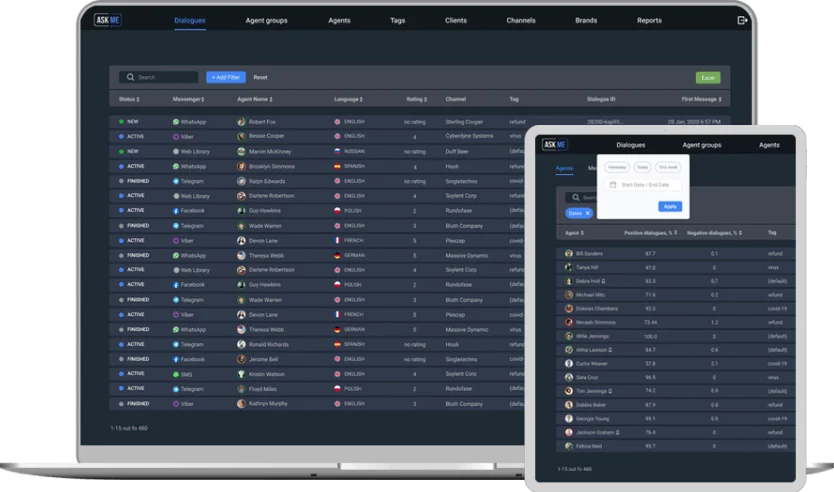You can address security in SDLC following DevSecOps practices and conducting security assessments during the entire SDLC process. A software development lifecycle (SDLC) model conceptually presents SDLC in an organized fashion to help organizations implement it. Different models arrange the SDLC phases in varying chronological order to optimize the development cycle. The development team combines automation and manual testing to check the software for bugs. Quality analysis includes testing the software for errors and checking if it meets customer requirements.
The team estimates costs, creates a schedule, and has a detailed plan to achieve their goals. Each stage in the SDLC has its own set of activities that need to be performed by the team members involved in the development project. While the process timeline will vary from project to project, the SDLC generally follows the seven stages outlined below. There are seven stages in the SDLC and six common models that are used for different projects. In this guide, we’ll go through each stage and model to give you an overview of what becoming a software developer entails.
Software Reliability
In the development stage of SDLC, the system creation process produces a working solution. Developers write code and build the app according to the finalized requirements and specification documents. Ready to maximize the efficiency of your systems development life cycle? If you’re a developer or project manager, an understanding of the most up-to-date SDLC methodologies is a powerful tool.

At this phase, there is a risk of “scope creep” such that system enhancements that go beyond the charter and project management plan may be identified. These potential enhancements should be logged for future consideration but not acted upon immediately. The project manager plays a central role in this prioritization process. The end goal of this phase is for a system that is ready for implementation.
Implementation
Ideally, testing should happen at every stage of the SDLC to address issues early when they are fastest and most cost effective to fix. However, tests are often postponed until later stages, especially if they are not well integrated and create friction. SDLC is also an abbreviation for Synchronous Data Link Control and software development life cycle. Software development life cycle is a very similar process to systems development life cycle, but it focuses exclusively on the development life cycle of software. This stage involves deploying the developed system into the production environment. This includes activities such as system installation, data migration, training end-users, and configuring necessary infrastructure.

Having separate build and production environments ensures that customers can continue to use the software even while it is being changed or upgraded. The deployment phase includes several tasks to move the latest build copy to the production environment, such as packaging, environment configuration, and installation. When teams develop software, they code and test on a different copy of the software than the one that the users have access to. The software that customers use is called production, while other copies are said to be in the build environment, or testing environment. At Intellectsoft, we know how important an effective project management strategy is. Our developers and specialists have a track record of building innovative software solutions that perfectly fit our clients’ business goals and requirements.
Stages of the System Development Life Cycle
It’s when you gather the team to brainstorm, set goals, and identify risks. At this stage, the team will work together to devise a set of business goals, requirements, specifications, and any high-level risks that might hinder the project’s success. The waterfall model provides discipline to project management and gives a tangible output at the end of each phase.
- Therefore, the model is most suitable for small software development projects, where tasks are easy to arrange and manage and requirements can be pre-defined accurately.
- The third theme includes ways to determine the processes (actions) necessary to produce the results as defined by the requirements of the system.
- ” This phase of the SDLC starts by turning the software specifications into a design plan called the Design Specification.
- It’s mostly used for smaller projects and experimental life cycles designed to inform other projects in the same company.
- The iterative and phased stages of an SDLC benefit from the leadership of a dedicated project manager.
The basic fact finding techniques include questionnaires, interviews, observation, and document collection. The iterative and phased stages of an SDLC benefit from the leadership of a dedicated project manager. The major goal of an SDLC is to provide cost effective and appropriate enhancements or changes to the information system that meet overall corporate goals. The project manager is responsible for executing and closing all the linear steps of planning, building, and maintaining the new or improved system throughout the process.
How does SDLC address security?
During any life cycle stage, more than one activity may also be carried out. The system development life cycle (SDLC) is the overall process of developing software using a series of defined steps. There are several system SDLC models that work well for developing applications in Oracle APEX. The waterfall approach is best suited for a simplistic, yet systematic approach to meet the exact requirements of the client. The immediate benefit to the client is the constant realization of the benefits in terms of the expectations of the final deliverable. This approach also ensures that the provider can constantly measure itself to interpret the requirements of – and deliver the best solution to – the client.

This led to a high number of bugs that remained hidden as well as increased security risks. The software development life cycle (SDLC) is the process of planning, writing, modifying, and maintaining software. Developers use the methodology as they design and write modern software for computers, cloud deployment, mobile phones, video games, and more.
1.1 Differences Between Iterative and Planned
At some point before each release, specifications would be frozen and the remaining time spent on fixing bugs. The system development life cycle or SDLC is a project management model used to outline, design, develop, test, and deploy an information system or software product. In other words, it defines the necessary steps needed to take a project from the idea or concept stage to the actual deployment and further maintenance. Those involved in the SDLC include the c-suite executives, but it is the project/program managers, software and systems engineers, users, and the development team who handle the multi-layered process. Each project has its own level of complexity in planning and execution, and often within an organization, project managers employ numerous SDLC methods.
Failure to take into account the needs of customers and all users and stakeholders can result in a poor understanding of the system requirements at the outset. SDLC done right can allow the highest level of management systems development life cycle control and documentation. All parties agree on the goal upfront and see a clear plan for arriving at that goal. After training, systems engineers and developers transition the system to its production environment.
S. Reliability Models
Microservices architecture, for example, makes it easy to toggle features on and off. A canary release (to a limited number of users) may be utilized if necessary. As a rule, these features help to finalize the SRS document as well as create the first prototype of the software to get the overall idea of how it should look like. You needn’t worry any longer as the search for answers to the latest security issues is over. Learn how embracing the benefits of single delivery platform will help protect your business. SDLC can be used to develop or engineer software, systems, and even information systems.


